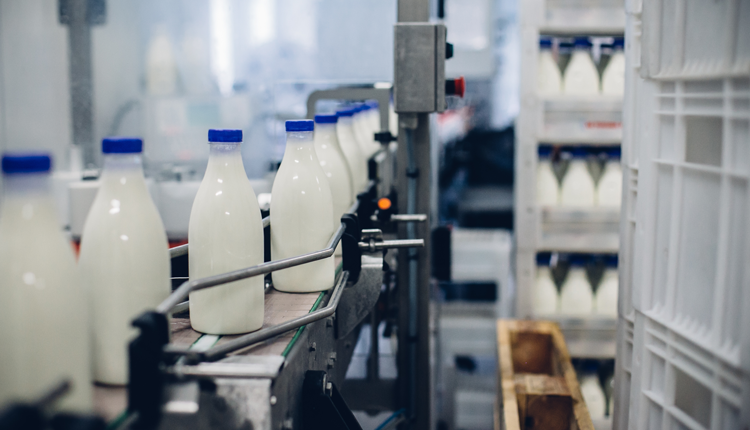
With 2020 in dairy’s rearview mirror, it’s time to focus on 2021. Even with the new year upon us, 2020 will cast a long shadow. Despite last year’s challenges with commercial demand, milk production continued to climb.
U.S. milk production during July through October was up by 2.1% over a year earlier. Total milk solids production, which provides a more accurate measure of milk supply when assessing its economic effects, was up by 2.7% during the same four months.
With normal demand for dairy products dampened by the pandemic, a supply expansion of this magnitude would have been disastrous for milk prices if not for the massive government purchases through food boxes and other programs. The unprecedented levels of direct payments to producers also bolstered farm income. This was all funded through emergency legislation enacted to help protect U.S. agriculture against the economic damage of the pandemic. All told, the federal government pumped more than $5 billion into the dairy sector last year for this purpose.
Three main drivers
The near-term outlook for milk prices will be heavily driven by three things:
- Milk and milk solids production will likely keep expanding.
- The pandemic will continue to depress food service dairy sales.
- The massive spending on emergency aid to the industry in 2020 is not expected to continue at last year’s levels.
As of the middle of December, the dairy futures were indicating the U.S. All-Milk price would average about $17.90 per hundredweight (cwt.) during the first six months of 2021 but would look a little brighter, at $18.40 per cwt., when averaged over all of calendar year 2021. USDA’s mid-December outlook was much more downbeat, projecting an All-Milk price average of $16.60 per cwt. for all of 2021.
This would not be much higher than prices averaged during 2016 and 2018, which were difficult years for dairy farmers. The current outlook also shows that payments under the Dairy Margin Coverage program will be triggered at the $9.50 per cwt. coverage level for most months in 2021.
2020’s principal legacy for 2021 is the unintended consequences that accompanied the massive food purchase assistance administered by the federal government. These purchases were critical in preventing milk prices from remaining at last spring’s catastrophic levels, but they resulted in patterns of monthly supply-demand balances quite different from those which normal consumer demand would have produced, absent the pandemic.
Cheese prices were most affected. The differing levels of monthly intervention produced a pattern of cheese prices, and hence Class III skim milk prices, that, following their initial price plunge this past spring, resembles a giant letter “M” on a price chart. This pattern, coupled with advanced pricing for Class I milk and the wide divergence between Class III and Class IV skim milk prices that affected the Class I price mover implemented just a year earlier, were the causes of the unprecedented levels of negative producer price differentials (PPDs) and the depooling of Class III milk in the component pricing federal orders.
More normal but . . .
The current price outlook indicates that federal order class prices will return to more normal alignments this year. However, the pandemic’s continued impact on food service demand, coupled with the painful memories of last year’s pricing problems, will make fixing these issues a dominant topic of conversation in the industry.
The National Milk Producers Federation has been closely examining ways to do just this. The basic issue with the current Class I mover is that it exposes producers to an asymmetric risk in Class I pricing, previously considered mostly theoretical but revealed by 2020’s market volatility to be very real.
Namely, the current “average-of” based mover can never be more than 74 cents per cwt. higher than the previous higher-of mover, while it can fall much further below. It was $4.74 per cwt. lower this past August and $5.19 per cwt. lower in December. This asymmetric risk is exactly flipped from the perspective of handlers paying Class I prices into federal order pools.
Negative PPDs and depooling have resulted from many of the same causes. Federal milk marketing orders were designed to operate smoothly at a time when fluid milk accounted for the majority of total milk production. Pooling the smaller volumes of Grade A milk used for manufacturing was necessary to maintain a reserve supply of milk available to supply varying Class I needs.
But decades of growth in cheese and milk ingredient production to supply both domestic and export demand, coupled with declining domestic fluid milk consumption, has steadily eroded Class I utilizations, and hence the value of drawing the pooled Class I values in federal orders. Such steady erosion has made it increasingly preferable to depool Class III, and sometimes Class IV, milk from order pools during periods when manufacturing class prices exceed the average value of the remaining milk, including Class I, in the pool.
More thoughts on depooling
A negative PPD on a producer’s milk check in a component pricing order does not mean that money is being taken out of the check; it means the pool doesn’t have enough money from total handler payments to pay all pooled milk at Class III component values. Even depooling of higher-valued manufacturing milk does not mean that producers have lost money in total; rather, it has been distributed based on where producers’ milk is actually shipped.
There will be continued discussions of pooling and depooling provisions in individual orders this year, but there are limits to USDA’s current authority to do so. In addition, tightening up such regulations could result in chasing manufacturing milk more permanently out of federal order pools.
Hopefully, the industry will see a return to more normal operations this year. But 2020 will stay very much top-of-mind during the debates over the issues it has raised, issues most of which the industry wasn’t thinking about as recently as a year ago.








